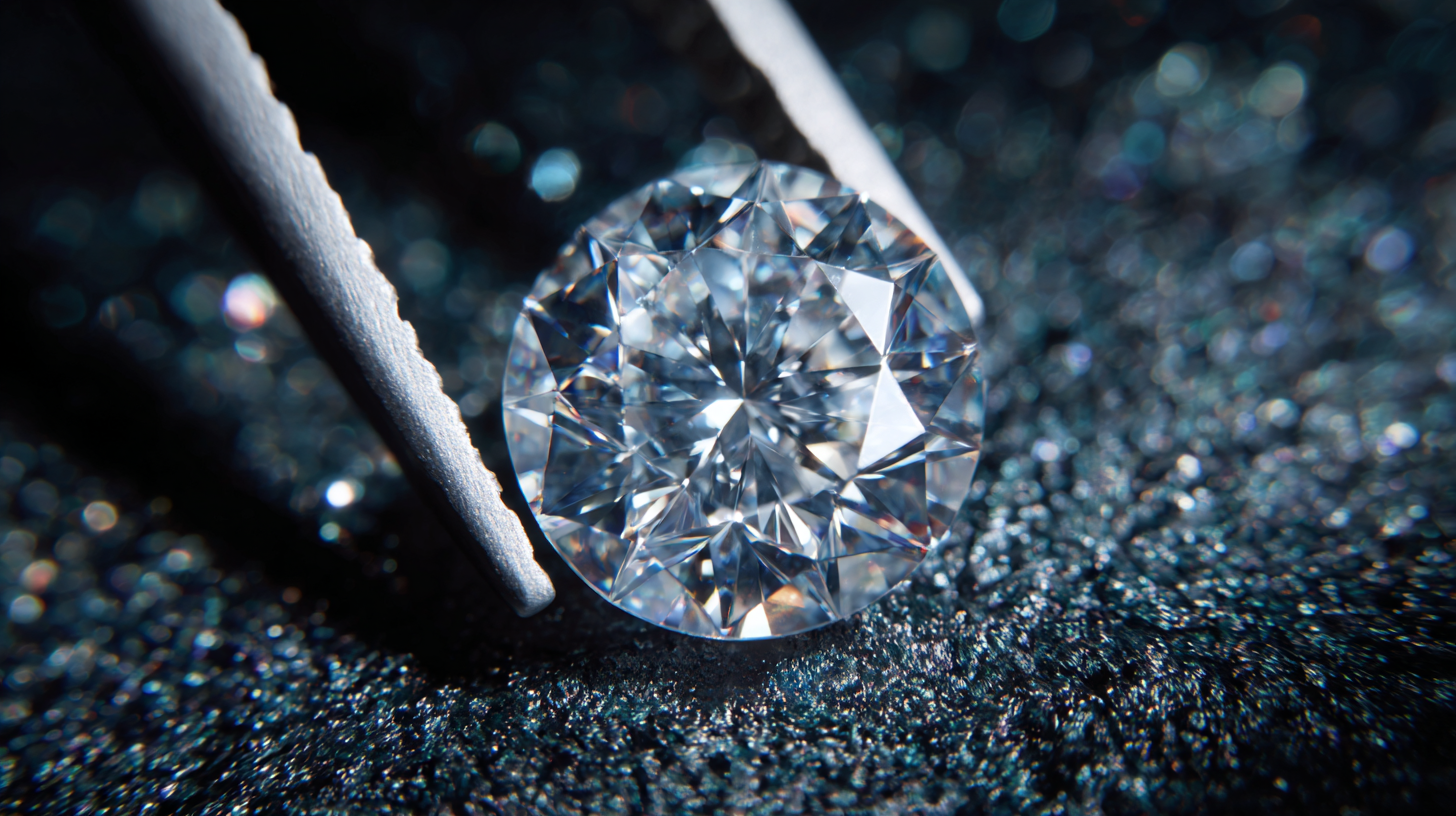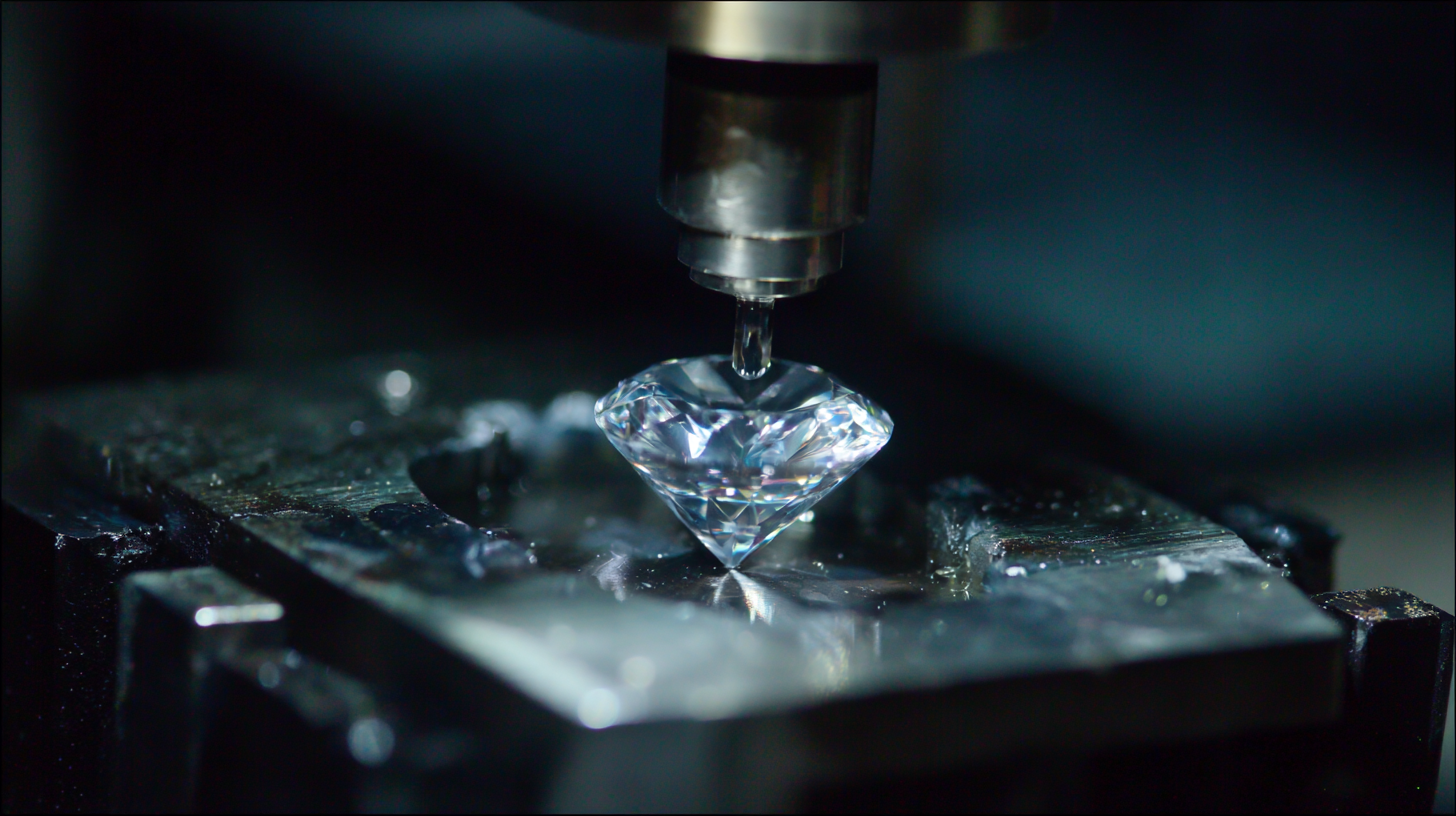
The rapidly evolving field of diamond synthesis has given rise to various alternatives to the traditional CVD diamond process, each offering unique features and applications across multiple industries. According to a recent report by Markets and Markets, the synthetic diamond market is projected to reach $22.26 billion by 2026, with the CVD diamond process playing a pivotal role due to its ability to produce high-quality diamonds tailored for industrial and commercial use. The versatility of CVD diamonds, characterized by their exceptional hardness and thermal conductivity, makes them indispensable in sectors ranging from electronics to aerospace. As we delve into the unique features and applications of CVD diamond process alternatives, we will explore how these innovations are reshaping the landscape of diamond manufacturing and addressing the growing demands for performance and sustainability in cutting-edge technologies.

 The chemical vapor deposition (CVD) process has revolutionized the diamond industry by providing an alternative to natural diamond mining. However, several variations of CVD diamonds each boast unique characteristics and applications. For instance, microwave plasma CVD is known for producing green diamonds that exhibit exceptional brilliance and color uniformity, making them ideal for high-end jewelry. According to a recent report by MarketsandMarkets, the CVD diamond market is projected to reach $2.59 billion by 2025, with increasing demand for synthetic diamonds in industrial applications such as cutting tools and optics.
The chemical vapor deposition (CVD) process has revolutionized the diamond industry by providing an alternative to natural diamond mining. However, several variations of CVD diamonds each boast unique characteristics and applications. For instance, microwave plasma CVD is known for producing green diamonds that exhibit exceptional brilliance and color uniformity, making them ideal for high-end jewelry. According to a recent report by MarketsandMarkets, the CVD diamond market is projected to reach $2.59 billion by 2025, with increasing demand for synthetic diamonds in industrial applications such as cutting tools and optics.
In addition to jewelry and industrial applications, CVD diamonds are making strides in electronics due to their excellent thermal conductivity and electrical insulation properties. A comparative analysis highlighted that CVD diamonds can outperform traditional semiconductor materials, significantly enhancing performance in high-temperature environments. As the industry continues to innovate, incorporating CVD diamonds into advanced technologies may pave the way for improvements in device efficiency and longevity.
Tip: When selecting a CVD diamond for a specific application, consider the properties that most align with your requirements, such as thermal conductivity for electronics or aesthetic qualities for jewelry. Always check certification from accredited labs to ensure the authenticity and quality of the diamond you are purchasing.
The exploration of Chemical Vapor Deposition (CVD) diamond techniques has revealed a spectrum of strengths and limitations that are crucial for various applications. CVD diamonds can be synthesized through various methods, including High-Pressure High-Temperature (HPHT), Hot Filament CVD (HFCVD), and Microwave Plasma CVD (MPCVD). Each technique offers unique advantages: for instance, HFCVD is known for its higher growth rate and better control over film quality, while MPCVD tends to produce higher purity diamonds suitable for electronics and optics. However, these methods also come with challenges, such as the complexity of the setup and the costs associated with equipment maintenance.
Tips for those considering CVD diamond applications include assessing the specific requirements of your project—whether that’s thermal management or cutting tool fabrication. Understanding the limitations of each technique, such as the potential for unwanted impurities in HPHT diamonds or the slow growth rates of some methods, can guide you towards the most effective choice. Additionally, exploring complementary technologies like additive manufacturing may open new avenues for integrating diamond materials into advanced applications.
Keep in mind that the evolving research landscape, particularly in the development of catalysts to enhance diamond quality, indicates that staying updated with recent advancements is key to leveraging the full potential of CVD diamonds. Employing predictive models, such as those from supervised machine learning, could further assist in optimizing your applications and forecasting performance in innovative ways.
Chemical Vapor Deposition (CVD) diamonds have carved a niche across various industries due to their superior properties, including high thermal conductivity and exceptional hardness. As reported by MarketsandMarkets, the global CVD diamond market is predicted to reach USD 4.2 billion by 2027, growing at a CAGR of 7.5% during the forecast period. This forecast underscores the increasing adoption of CVD diamonds in sectors like electronics, optics, and cutting tools. Their ability to withstand extreme conditions makes them particularly sought after for applications in high-performance electronics, where thermal management is critical.
In addition to traditional uses, CVD diamonds are revolutionizing the field of medical technology. A report by Visiongain highlights that the medical device industry is projected to allocate over USD 200 million specifically for diamond-based materials by 2025. This trend is particularly prominent in surgical applications, where CVD diamond's biocompatibility and chemical resistance enhance the performance of medical instruments. Furthermore, advancements in CVD technology are enabling the production of high-quality diamonds at lower costs, thereby expanding their application in consumer goods, such as luxury jewelry and aesthetic products, thus broadening their market footprint.
As the demand for high-quality synthetic diamonds continues to grow, the evolution of Chemical Vapor Deposition (CVD) technologies has become increasingly significant. Emerging trends in CVD diamond production highlight innovations such as improved substrates and advanced gas precursors, which are enhancing crystal quality and reducing production costs. These technological advancements not only increase efficiency but also enable the creation of diamonds with tailored properties for specific applications in sectors like electronics, cutting tools, and bio-medical devices.
Tips: When exploring CVD diamond technologies, consider the scalability of the methods being used. Investigating pilot projects can provide insights into the practicality of innovations. Additionally, keeping an eye on collaborations between research institutions and industries can reveal emerging trends that may soon hit the market.
Sustainability is another key focus area, with an emphasis on eco-friendly gas sources and energy-efficient processes. As environmental awareness rises, the diamond industry is responding by integrating sustainable practices into CVD production. This shift not only aligns with global sustainability goals but can also appeal to a more environmentally-conscious consumer base.
Tips: Look for companies that prioritize sustainability, as these businesses are likely to lead the way in responsible diamond manufacturing. Monitoring industry publications and attending trade shows can also help stay ahead of the curve in understanding new technological advancements and market shifts.
| CVD Process Alternative | Unique Features | Applications | Emerging Trends |
|---|---|---|---|
| Microwave Plasma CVD | High growth rates, uniform film deposition | Semiconductor substrates, optical components | Increased efficiency and scalability |
| Hot Filament CVD | Low cost, simple setup | Coatings for tools, wear-resistant applications | Advancements in filament materials |
| Cold Plasma CVD | Controlled deposition at lower temperatures | Bio-compatible coatings, electronic devices | Integration with nanotechnology |
| Aerosol-assisted CVD | Efficiency in material usage, high deposition rates | Large-area applications, industrial coatings | Expanding use in environmental applications |
| Liquid Phase CVD | High purity diamond films, precise control | Optical devices, advanced electronics | Research into new precursors |
Sustainability has become a critical consideration in the production of Chemical Vapor Deposition (CVD) diamonds. According to a recent report by Allied Market Research, the global CVD diamond market is projected to reach $16.4 billion by 2027, driven largely by demand for eco-friendly alternatives to mined diamonds. Traditional diamond mining has significant environmental impacts, including habitat destruction and carbon emissions. In contrast, CVD processes can utilize renewable energy sources and reduce waste, presenting a more sustainable option.

Moreover, advancements in CVD technology are improving both efficiency and eco-friendliness. Research indicates that modern CVD systems can achieve production efficiencies of up to 95%, dramatically lowering the energy required per carat compared to conventional mining techniques, which can consume tens of kilowatt-hours per carat. Additionally, many CVD diamond manufacturers are implementing closed-loop systems to recycle gases and solvents, minimizing their ecological footprint. As the industry evolves, balancing these factors will be vital in meeting both consumer demands and environmental responsibilities.





